Introduction¶
A computer is like a violin. You can imagine a novice trying first a phonograph and then a violin. The latter, he says, sounds terrible. That is the argument we have heard from our humanists and most of our computer scientists. Computer programs are good, they say, for particular purposes, but they aren't flexible. Neither is a violin, or a typewriter, until you learn how to use it. -- Marvin Minsky, "Why Programming Is a Good Medium for Expressing Poorly-Understood and Sloppily-Formulated Ideas"
This note explains how a program works and introduce concepts such as programming languages, compiler and interpreter.
Todo
- Why learn programming?
- Why learn Python?
- popular and general
- community
- goal: easy programming
- Programming model: Von Neumann model of computing
- Python History
How a Program Works¶
A computer can be simplified as the following diagram:
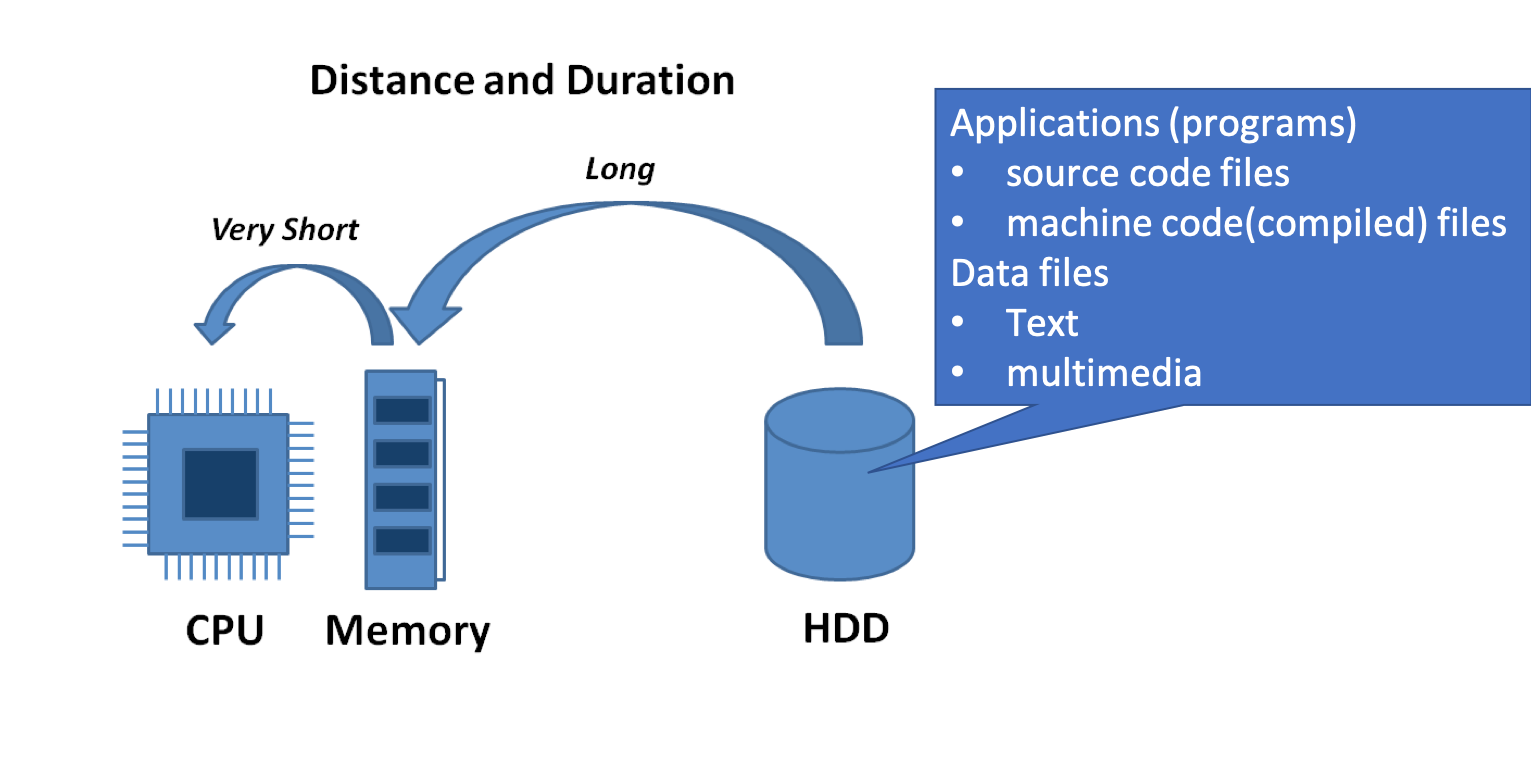
CPU¶
CPU is designed to perform simple operations on pieces of data: examples include reading data, adding, subtracting, multiplying, and dividing numbers.
It understands instructions written in machine language, also called machine code. Each brand of CPU has its own instruction set.
To carry out meaningful calculation, CPU must perform many machine-level (low-level) operations in 0s and 1s (binary code).
Program Execution¶
Program must be copied from secondary memory (hard disk or SSD) to RAM each time CPU executes it. CPU executes program in cycle:
- Fetch: read the next instruction from memory into CPU
- Decode: CPU decodes fetched instruction to determine which operation to perform
- Execute: perform the operation

Programming Languages¶
Machine languages are impractical for people to write and understand. Computer scientists invented assembly languages that use short words (mnemonics) for instructions instead of binary numbers.

Nonetheless, computers can only understand and execute machine languages. Therefore there is a so-called Assembler to translate an assembly language to a machine language for execution by CPU.
However, assembly languages are close in nature to machine language. Both machine languages and assembly languages are low-level languages because they have low-level relatively simple instructions.
High-Level languages invented to allow simple creation of powerful and complex programs. There is no need to know how CPU works or write large number of instructions. They are more intuitive to understand.
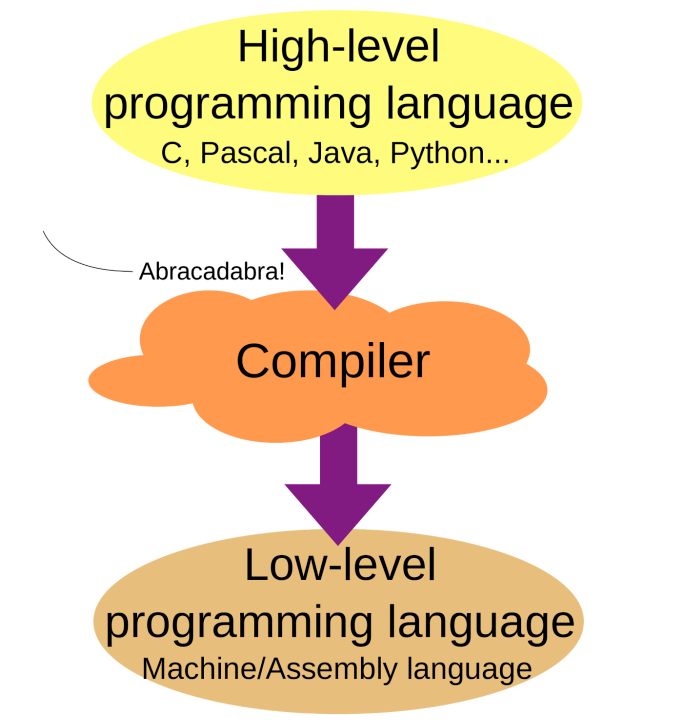
As you can see, programs written in high-level languages must be translated into machine language to be executed.
Compiler and Interpreter¶
A compiler translates high-level language programs into machine language programs. Machine language programs are executable applications that can be executed by computers. Different computers (cell phone, PC, mainframe computer) may use different CPUs that execute different machine languages. It is the job of the compiler to compile the high level program into different machine code programs for different computers.
There is another way to run programs written in high-level languages: using interpreter. An interpreter is a "machine" that translates and executes instructions in high-level language program such as Python. It interprets and executes one instruction at a time.
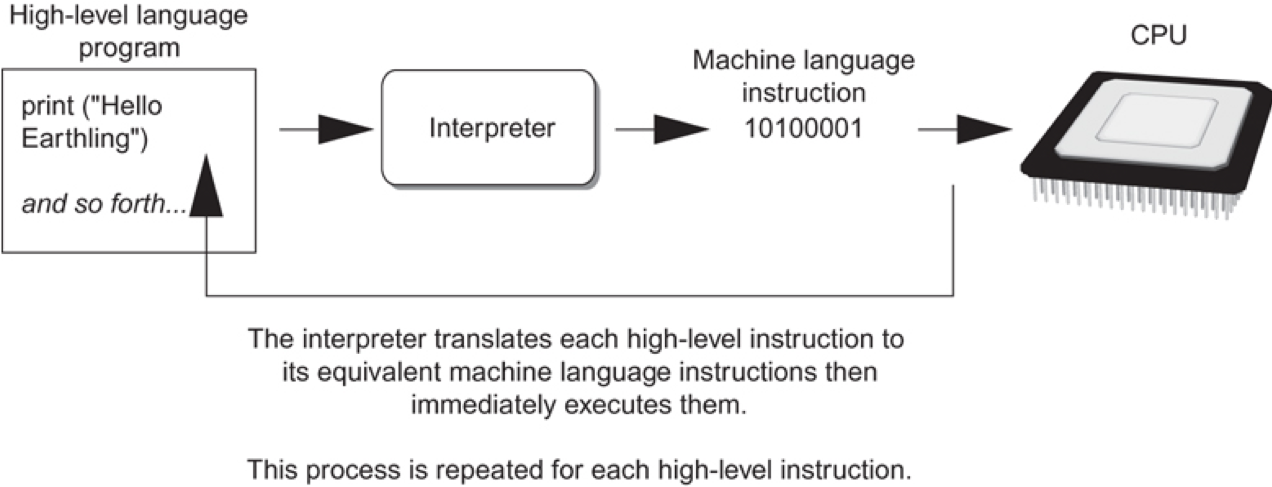
Of course, the interpreter is a machine code program executed in a CPU. You can think an interpreter as a machine emulator or software machine that can understand and execute high-level languages instructions.
Python is an interpreter and Python programs are interpreted (executed) by Python. A program language that requires an interpreter is often called a scripting language. A program written in scripting language is called a script.
The key differences between a compiler and an interpreter are:
- all vs one statement a step: a compiler compiles all instructions together. An interpreter interprets one instruction/statement at one time.
- executable files or not: A compiler produces executable machine code files from source code files. An interpreter doesn't produce any executable files from source code file.
- what to run: for a compiler, a user runs the executable file (program/application) in a computer or a virtual machine. An interpreter interpreters and executes a statement at a time directly from source code.
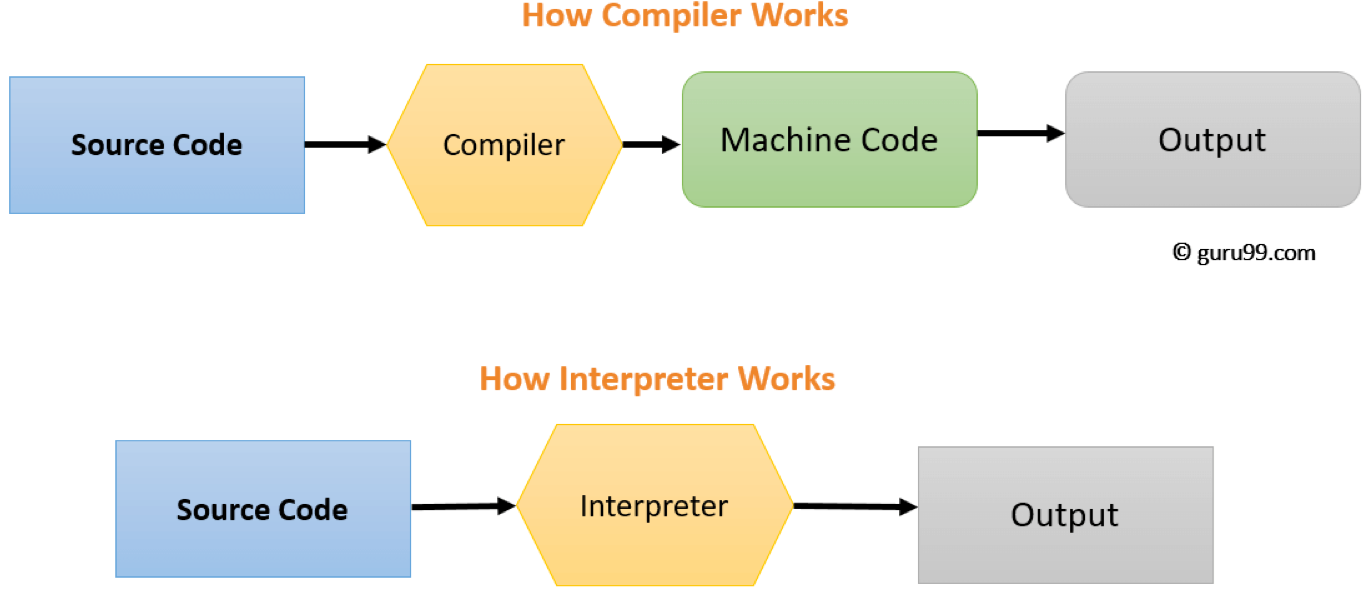
However, the boundary between a compiler and an interpreter is not clear because there are compilers such as Cython that compiles Python source code to machine code. Another reason is that high-level languages such as Java or C# use a virtual machine to run their code. A virtual machine is similar to an interpreter. The virtual machine code is usually called byte code where the real machine code is called machine code. The byte code is an intermediate representation (IR) because it still needs to be converted into machine code by the virtual machine. You may think the Java Virtual Machine (JVM) as an interpreter as depicted in the following diagram.
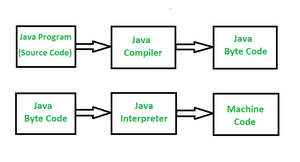 (source: Difference between Byte Code and Machine Code)
(source: Difference between Byte Code and Machine Code)
Concepts of a Programming Language¶
Constructs¶
- Primitive Constructs
- Literals:
3,"abc" - Keywords: predefined words used to write program in high-level language. For example:
if,while.- Each keyword has specific meaning. For example:
if,true.
- Each keyword has specific meaning. For example:
- Operators: perform operations on data. Example: math operators
+and-to perform arithmetic. - Syntax: set of rules to be followed when writing program.
- Static semantics: rules define which syntactically valid strings have a meaning. For example: "He run quickly". In code:
3 / "abc"or3 / 0. Dynamically typed languages don't check this. - Semantics: the meaning of the code.
Program Errors¶
- Syntactic error: code violates the syntactic rules. For example:
3 +- 5. - Semantic error: the program has as unintended meaning. For example, you calculate the sum of two numbers by
n1 * n2.
What might happen if a program has an error
- Syntactic error: This is a "Good" error because compiler/interpreter refuse to run the code. The program fails fast.
- Semantic error: this is "Bad" error with bad consequences:
- The program crashes
- The program runs forever
- The program appears normal but might give wrong results. This might cause big damages.
Elements of a Program¶
A program is a set of instructions written in a specific programming language.
- Expression: a single value such as
3or an operation such as3 + 5that produce a value. - Statement: individual instruction that use expression(s) to perform a task. For example:
print(3 + 5). - Source code: statements written by programmer.
Turing Completeness¶
A Universal Turing Machine can be programmed to compute any computable functions.
A program language is Turing complete if it can be used to simulate a universal Turing machine. It sounds scary but it is simple in practice:
- can read and write data/variables.
- supports branches
if ... else .... - supports loops
do ... until....
Most programming languages are Turing complete. But there are languages that are not. For example, Bitcoin script is not Turing complete, why?